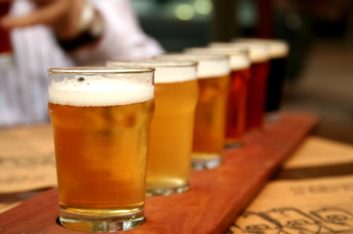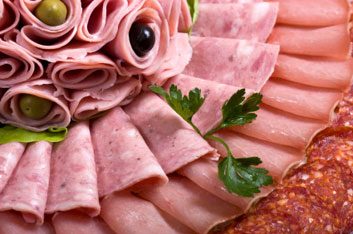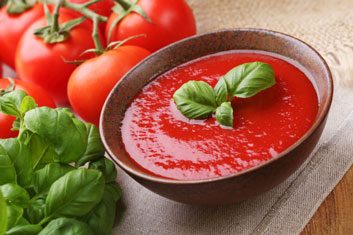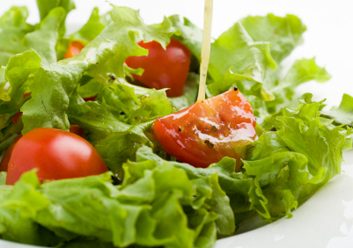
Suprising sources of gluten
Those who have recently been diagnosed with celiac disease or gluten sensitivity know the importance of reading labels. Some foods that appear to be left without a trace of gluten are in fact filled with this common allergen. Next time you’re at the grocery store, make sure to read product labels carefully and stay alert when it comes to munching on seemingly harmless foods.
To help consumers better identify gluten-free products, Health Canada approved a regulation that came into effect in August 2012, stating that all packaged products need to be visibly identified with any allergens. The regulation calls for “clearer language and the declaration of otherwise ‘hidden’ allergens, gluten sources and sulphites” to help consumers better identify what’s hiding in those sometimes hard to read labels.
We checked with registered dietitian, Andrea D’Ambrosio, to get the skinny on some favourite foods that are commonly mistaken as gluten-free.

Soy sauce
Sushi itself is generally considered to be gluten-free except for rolls filled with imitation crab or tempura. But did you know that what you dip your sushi in might be even more of a concern? Soy sauce, although a high-sodium liquid, is filled with wheat or barley (sometimes both) so it’s important to look for options that are free of those ingredients and are exclusively soy-based.

Chocolate
Oh no! Chocolate too? For us chocolate-cravers, a piece (or two) of dark, white, or milk chocolate is a go-to snack staple. However, it’s important to be extra diligent and really do your research here. While some chocolate bars and nuggets are gluten-free, the majority contain wheat flour. If you want to curb that chocolate craving, read labels first.

Alcohol
Not all alcohol contains gluten and many organizations have created gluten-free alternatives. “Many beers contain barley and some pre-made beverage mixes (like Bloody Mary or Caesar) often contain barley malt flavoring or hydrolyzed wheat protein,” explains D’Ambrosio. Any alcoholic mix or a drink that has been blended with other alcohol is a clear indicator that it’s not gluten-free. Reports that the alcohol distillation process “cancels out” gluten protein have been proven untrue, which is why many celiac sufferers are unable to tolerate grain-based alcohol such as vodka. Play it safe and opt for a potato-based brand instead.

Deli meats
“Modified food starch and cereal fillers are common ingredients found in freshly sliced and pre-packaged deli meats,” explains D’Ambrosio.
Tip: Buy pre-packaged deli meats that are clearly labeled gluten-free or go to your deli counter in the morning when equipment is clean to avoid possible cross-contamination from other deli products containing gluten.

Soup
Soups are a hearty and filling option for the cold winter months. Unless you are making soup yourself, beware of pre-made store-bought soups as they often contain wheat flour or wheat gluten. With seasonal vegetables readily available, it’s best to make your own soup as it can be stored for up to 4-5 days in the refrigerator to enjoy again and again.

Salad dressing
Many times salad dressings contain wheat flour; a thickening agent used to produce a creamier taste. If you are unsure if a dressing is gluten-free it is always best to make your own. Simple alternatives like avocado oil, freshly squeezed lemons, and apple cider vinegar are excellent, healthy options to dress your favourite salad.

Is wheat-free the same as gluten-free?
Don’t be fooled. Wheat-free doesn’t necessarily mean gluten-free. Wheat-free means the product is free from wheat but may still contain barley or rye. Both barley and rye contain gluten, so while it may be safe for someone with a wheat allergy to consume “wheat-free” products, it would not be safe for someone with a gluten sensitivity or celiac disease.
“Maintaining a gluten-free lifestyle is one of the most challenging diets to follow because you really have to question everything you put in your mouth,” notes D’Ambrosio. She stresses the importance of being extra vigilant with products that may come into cross-contamination, and above all else, if you are unsure if something is 100% gluten-free, refrain from eating it. For a celiac, consuming a tiny morsel of bread can have the same repercussions as eating an entire pizza.
Related:
• Do you need to go gluten-free?
• Coping with celiac disease
• 5 reasons your stomach hurts
